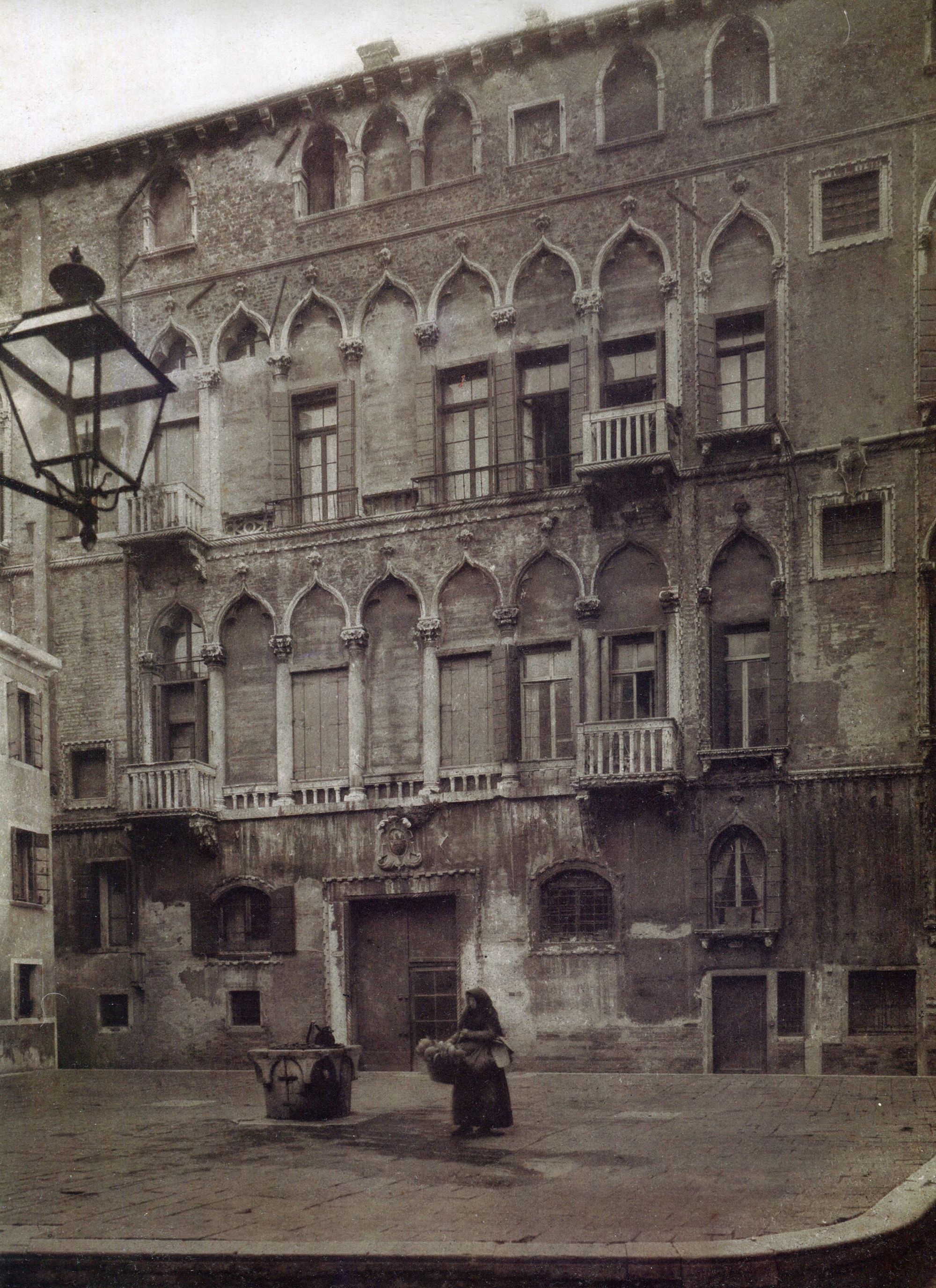
The original site of Mariano Fortuny’s workshop in the late nineteenth century, in a square in Venice that was then known as Palazzo Orfei. Photo courtesy of Fortuny Venezia 1921.
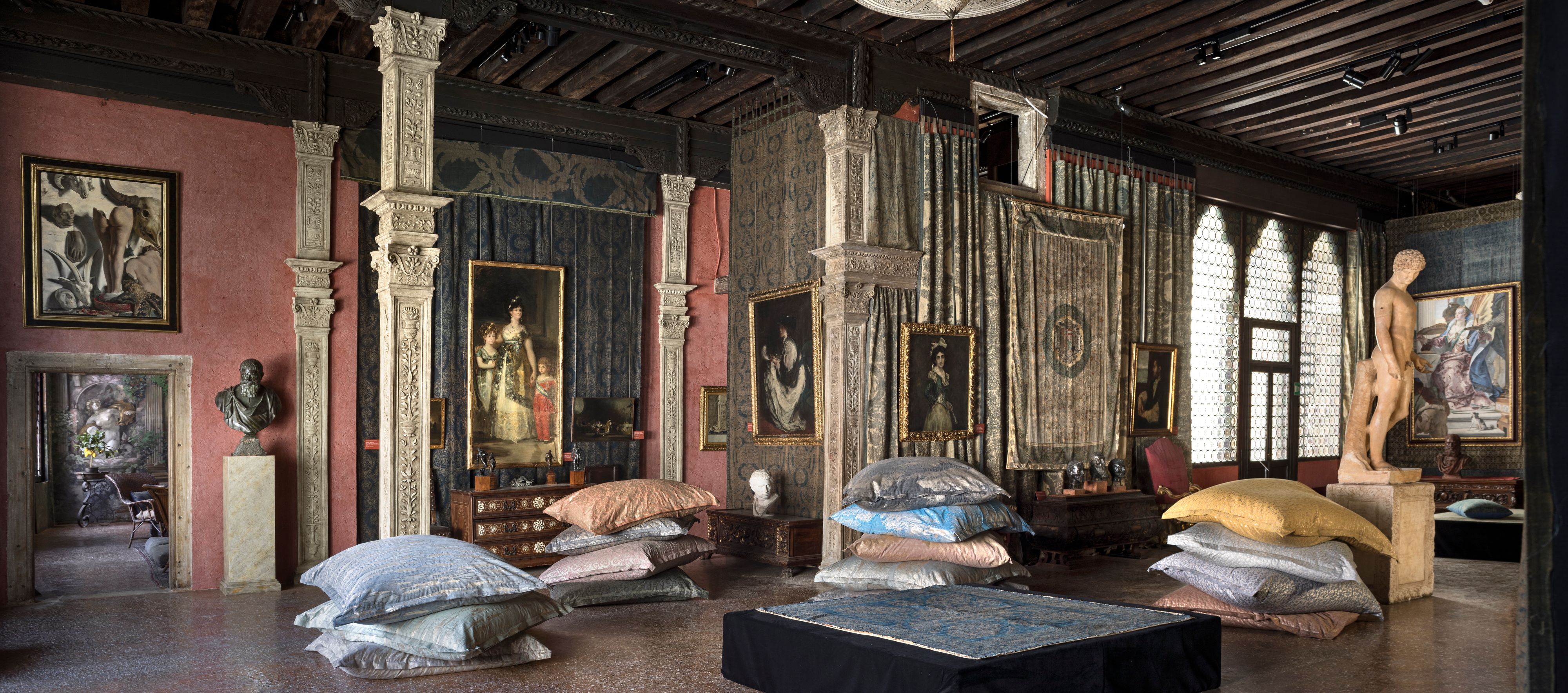
The newly reopened Mariano Fortuny y Madrazo Museum in Venice, Italy. Photo courtesy of Fortuny Venezia 1921.
How do you describe a secret? One that’s been passed down from generation to generation — woven, stitched, steamed, and ironed into a fabric whose story survives its creator. It’s a question I considered when thinking about the legacy of Fortuny, the esteemed textile company known for its lavishly produced and often richly patterned cotton fabrics, velvets, and wool. During my visit to the Venetian island of Giudecca, home to the Fortuny factory founded in 1922 by the Spanish-born inventor, designer and artist Mariano Fortuny (1871–1949), I met with Mickey Riad, Fortuny’s Creative Director, and the architect Alberto Torsello, the company’s new artistic director, who oversaw the recent renovation of the workshop in Giudecca. “What is the Fortuny secret?” I bluntly asked them, followed by questions about their machinery and types of yarn, light, and chemical dye. What makes the product successful? Is it the dimensionality of the fabric, the feel, or its allure? None of which they would reveal. It’s immediately apparent that it’s a company known for maintaining the legacy of their brand by keeping the secret of its material construction — it remains a business defined by the quality of their products even if the process behind them remains a mystery.
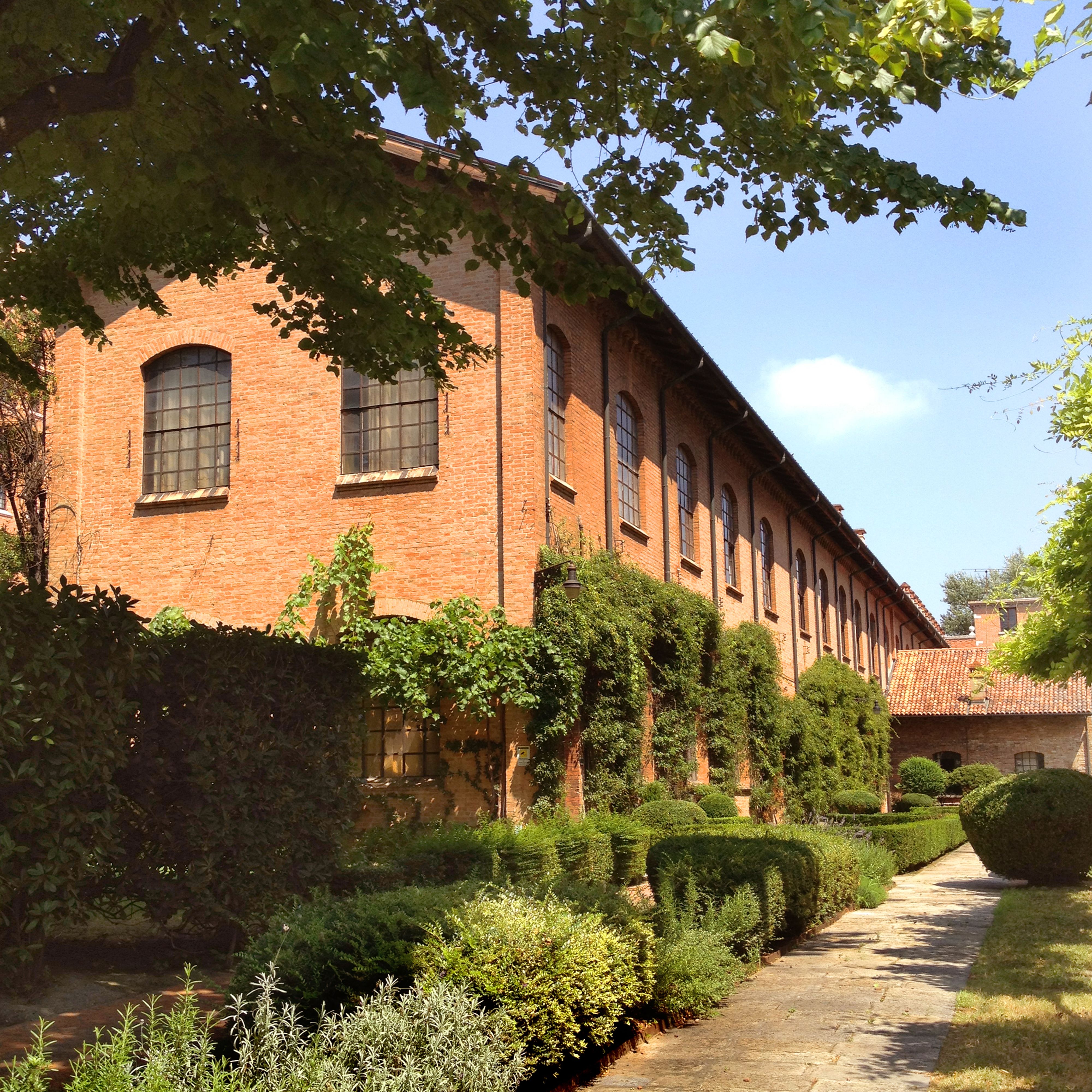
The exterior of the Fortuny factory in the Venetian island of Giudecca. Photo courtesy of Fortuny Venezia 1921.
Mariano Fortuny was born in Granada, Spain, the son of celebrated painter, Marià Fortuny y Marsal, and textile collector Cecilia de Madrazo y Garreta. Fortuny’s father died when he was only three years old and his mother raised him mostly in Paris. When he was 18 years old, his mother moved the family to Venice where he fell in love with the city’s rich history, deciding to infuse cultural references from the past into his contemporary designs. He was working as an inventor, innovating across genres, creating advanced diffused lighting systems, stage designs for the theater, and altering textile machines to create spatial dimensionality in fabrics. Publicly he was mostly known as a fashion designer, making dresses of Japanese silk (the Delphos gown was his most popular design). In 1922, thanks to increased demand, Fortuny moved his studio from what’s now the Fortuny Museum (in the 15th-century Palazzo Pesaro degli Orfei), which then served exclusively as his home, into an adaptive reuse space across the lagoon, to Giudecca island. The scarcity of silk in the 1920s almost compromised his artistic vision, so Fortuny pivoted to using cotton in his designs instead, changing the popular reception of the material from a humble textile to something more luxurious. This shift brought Fortuny’s work to the mainstream cultural consciousness.

The original site of Mariano Fortuny’s workshop in the late nineteenth century, in a square in Venice that was then known as Palazzo Orfei. Photo courtesy of Fortuny Venezia 1921.
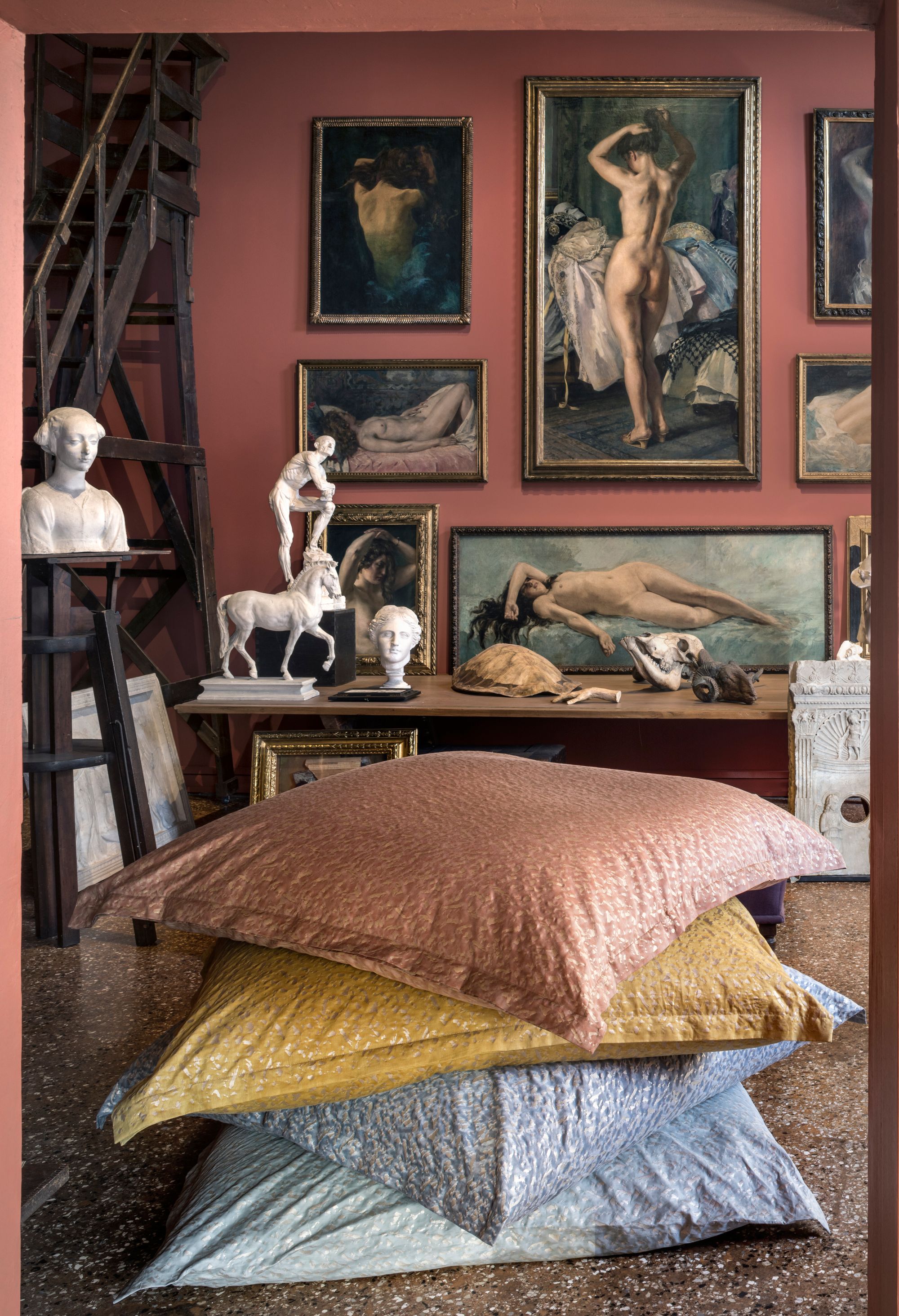
Fortuny pillows in the Fortuny Museum, which sits in that same square (although it’s been renamed Palazzo Fortuny). Photo courtesy of Fortuny Venezia 1921.
By the 1920s Fortuny had gained great success throughout Europe but the work was still unknown in the U.S. That would change in 1927, thanks to American designer and business woman Elsie McNeill Lee. She had discovered Fortuny’s textiles at the Musée Carnavalet in Paris and brought the designs back to New York, convincing Fortuny to let her be the exclusive distributor of his designs overseas. In 1928 the first Fortuny showroom opened on Madison Avenue — it read, “Elsie McNeill Lee, Inc.,” and “Fortuny, Inc.” When Mariano Fortuny died in 1949, his wife Henriette asked Lee to oversee the operations of the atelier given that she understood the history of the product and how to navigate the politics of maintaining the family business. She eventually took on the reins of Fortuny, where she oversaw and dealt with all business operations for the next four decades.
The Fortuny legacy shifted once again in 1970 after Lee crossed paths with Maged Riad. The Riad's plan was to move from Cairo, Egypt, to Boulder, Colorado, after Mona Riad, Maged’s wife, sold her wedding ring to help pay for travel expenses. They eventually settled in New York, after Maged‘s cousin convinced them to pay him a visit in New York on their way Colorado — they never left the city. Soon after, Riad started an apprenticeship to become a lawyer. A fumbled case by his boss led him to be given the exclusive rights to manage Lee’s portfolio and to work with her directly. Riad was only 26 years old at the time.

Brothers Mickey (left) and Maury Riad (right) continue the legacy of their late father Maged Riad (center) who took over the company in the 1990s.
In the mid-1980s, Elsie invited Maged Riad, his wife Mona, and their daughter Mira (8), Maury (10), and Mickey (12) to Giudecca, giving them a private tour of the showroom, headquarters, and factory, explaining the process of the business and fabric-making. Her goal was to sell him the company, but Riad ultimately turned down the offer. In 1988, Lee called on Riad again to persuade him to purchase the company from her to ensure it remained untouched by sterile commercial forces. Riad finally agreed, but didn’t tell his family until two years later. It wasn’t until 1994, when Lee passed, that Mickey started visiting the factory more regularly. In 1998, he and Maury took over Fortuny’s day-to-day operations. Mira, who founded The Littlest Lamb, an orphanage she built in Egypt, also became co-owner of the family company. Micky and Maury were only 23 and 22 years old, respectively, but within the first year, the Riad siblings increased sales by fifty percent. By the second year, sales doubled again; by year three, they’d tripled. In 2021, to celebrate the centennial of the business, the director and Riad brothers decided to change the name of the company from Fortuny to Fortuny Venezia 1921 as a tribute to where the company first took root and where it remains today. Today, Fortuny is available in showrooms worldwide, with a large presence in Europe, Asia, North America, Africa, and the South Pacific.

The Fortuny Factory on the Venetian island of Guidecca. Photo courtesy of Fortuny Venezia 1921.

Fortuny textiles in the Venice showroom. Courtesy of Fortuny Venezia 1921.
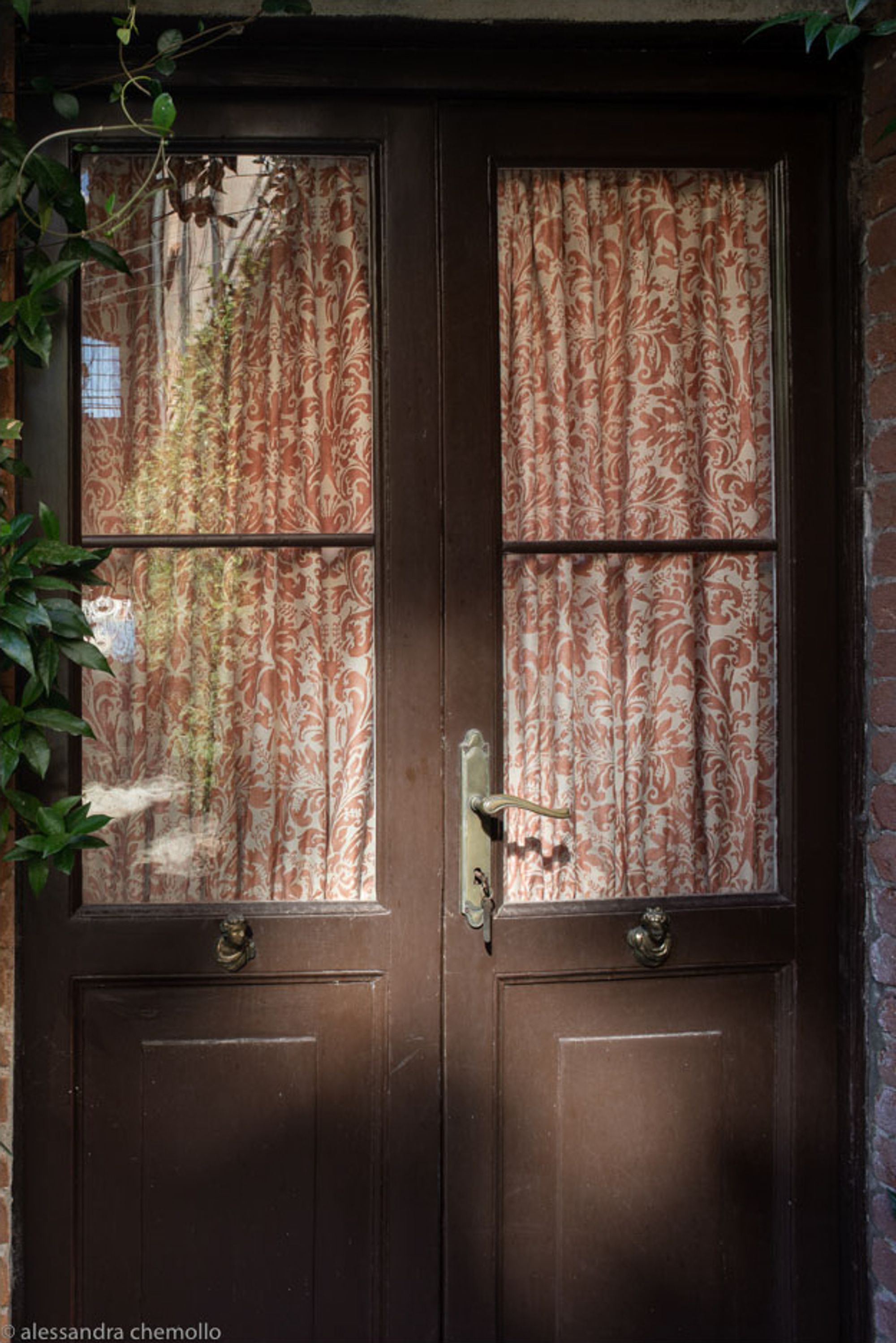
The Fortuny Factory on the Venetian island of Guidecca. Photo courtesy of Fortuny Venezia 1921.
To this day, no is allowed to visit inside Mariano Fortuny’s atelier aside from the production workers — the Fortuny sales team hasn’t even seen inside the space. While we walk the quarters together, Mickey Riad and Torsello talk through the priorities of the company and the process of redoing the showroom at the Giudecca atelier. Torsello, a native of Venice, grew up in a building directly facing the showroom across the lagoon. He, like the Fortunys and the Riads, knows the importance of keeping a secret, as he comes from a family of architects himself. He speaks of his dad encouraging him to study the light in spaces during his youth. “One builds around the light,” he says. “Without the light we have nothing.”
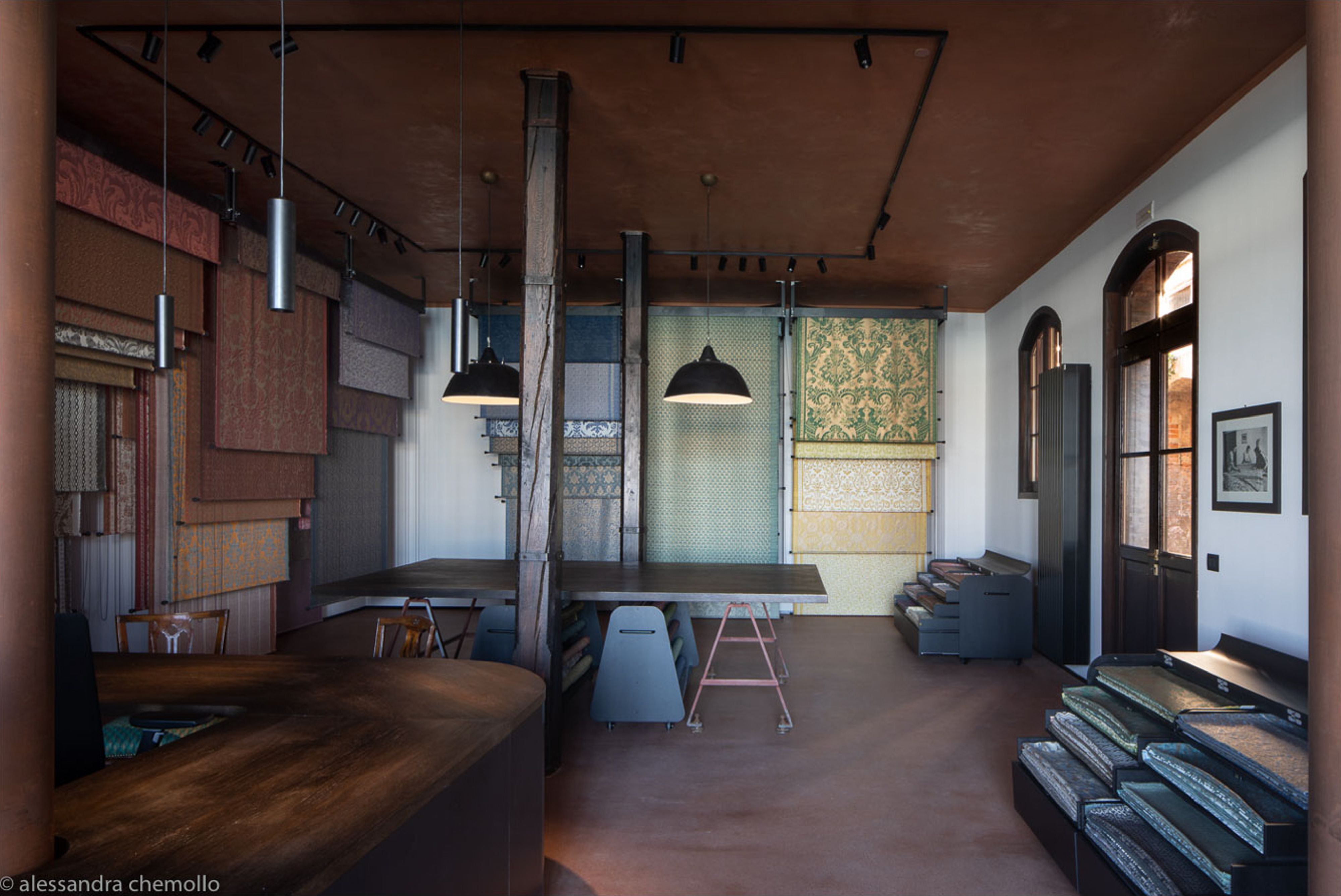
Inside the Fortuny Factory. Photo courtesy of Fortuny Venezia 1921.
Torsello was initially invited to redesign the showroom to better accommodate bolts of fabric in a way that showcased their variety. When Mickey Riad approached Torsello with recommendations for an artistic director, Torsello asked if he could be considered for the position himself. Mickey, surprised, talked it over with his partners and the team and decided to bring Torsello on to head the space. As we walked through the gardens, Torsello pointed out the parts of the building where they had to intervene to reinforce the structure. He then focused our attention on stains left on the exterior of the building from a fire at a neighboring hotel. They’re currently negotiating the politics of rebuilding it or adding an addition, as the structure has largely been untouched since the early 1940s. While touring the grounds, it became clear that although Torsello might not be a textile designer, he understands Mariano Fortuny’s vision intimately. By rebuilding the infrastructure to realign with Fortuny’s innovation and material experimentation in mind, Fortuny’s legacy is translated into spatial practice — and by someone who quite literally grew up dreaming about what took place inside the atelier from across the canal.